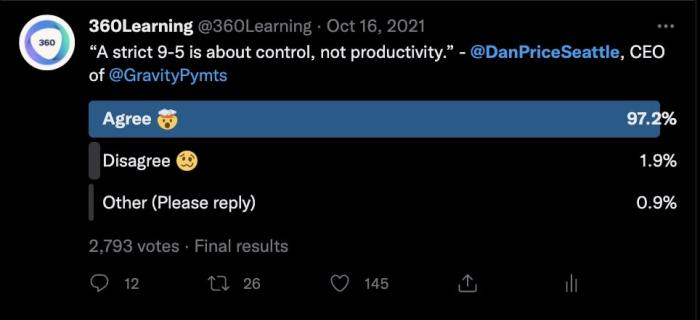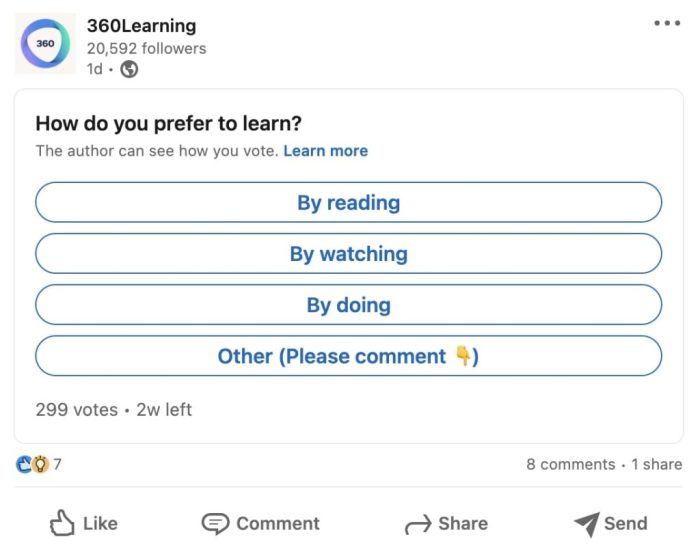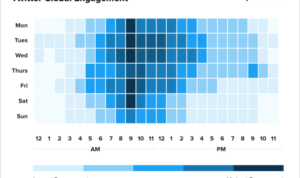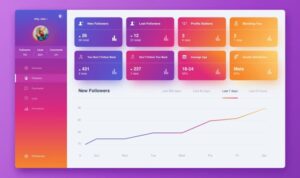Using Social Media Polls for Engagement sparks creativity and interaction among followers, revolutionizing the way brands connect with their audience. Dive into the world of social media polls and discover the power they hold in engaging your community.
Learn about the different types of polls, best practices for creating them, and how to increase engagement through strategic poll usage. Explore case studies that showcase the impact of polls on audience metrics and get inspired to elevate your social media game.
Introduction to Social Media Polls

Social media polls are interactive features that allow users to create and share polls with their audience on platforms like Instagram, Twitter, and Facebook. These polls can be used to gather feedback, increase engagement, and drive conversations among followers.
Benefits of Using Polls for Audience Engagement
- Increased Engagement: Polls are an easy way to encourage audience interaction and participation, leading to higher engagement rates.
- Feedback Collection: Polls provide valuable feedback from your audience, helping you understand their preferences and opinions.
- Enhanced Reach: Polls can boost visibility as they are shareable content that often gets more visibility on social media feeds.
Examples of Successful Engagement Strategies
- Product Preference Polls: Brands can use polls to ask followers about their favorite products or features, creating buzz and excitement.
- Interactive Q&A Polls: Hosting Q&A sessions through polls can foster conversations and build a sense of community among followers.
- Voting Polls: Polls that allow followers to vote on a particular topic or decision can generate excitement and anticipation.
Types of Social Media Polls: Using Social Media Polls For Engagement

When it comes to engaging your audience on social media, polls can be a powerful tool. Let’s explore the different types of social media polls that can be used to boost engagement and interaction with your followers.
Multiple-Choice Polls
Multiple-choice polls are a popular option on social media platforms like Instagram, Twitter, and Facebook. Users are presented with a question and a set of predefined answer options to choose from. These polls are quick and easy for followers to participate in, making them a simple yet effective way to gather feedback from your audience. The structured format of multiple-choice polls can also help you gain valuable insights into your followers’ preferences and opinions.
Open-Ended Polls
On the other hand, open-ended polls allow users to input their own responses instead of selecting from a list of options. While these polls may require more effort from participants, they can lead to more in-depth and personalized feedback. Open-ended polls are great for sparking conversations and encouraging creativity among your audience. They can also provide you with unique insights that you may not have considered with multiple-choice polls.
Image or Video Polls, Using Social Media Polls for Engagement
Adding visuals like images or videos to your polls can significantly boost audience engagement. Visual content is more likely to catch the eye of your followers and entice them to participate in the poll. By incorporating images or videos into your polls, you can make them more visually appealing and interactive. This type of poll can be especially effective for showcasing products, gathering feedback on visual content, or simply adding a fun and engaging element to your social media posts.
Best Practices for Creating Polls
When it comes to creating polls on social media, there are some best practices to keep in mind to ensure maximum engagement and valuable insights.
Crafting Engaging Poll Questions
- Keep questions concise and clear to avoid confusion.
- Use language that resonates with your audience to encourage participation.
- Include visuals or multimedia to make the poll more visually appealing.
- Avoid biased language that may influence responses.
Importance of Timing and Frequency
Posting polls at the right time can significantly impact the level of engagement you receive. Consider factors like your audience’s timezone, peak activity hours, and relevant events or holidays. Additionally, avoid overwhelming your followers with too many polls in a short period, as this can lead to poll fatigue and decreased participation.
Analyzing Poll Results
- Monitor poll responses in real-time to track trends and insights.
- Look for patterns or correlations in the data to identify key takeaways.
- Use poll results to inform future content decisions and tailor your posts to what your audience wants.
- Engage with participants by sharing the results and starting a conversation around the findings.
Increasing Engagement Through Polls
To increase engagement through polls on social media, it is essential to promote them effectively, incorporate them creatively into campaigns, and encourage meaningful interactions around the results.
Promoting Polls to Reach a Wider Audience
- Utilize eye-catching visuals and compelling captions to grab the attention of users scrolling through their feeds.
- Collaborate with influencers or other brands to reach a larger audience and increase the visibility of your polls.
- Share polls across multiple platforms to maximize exposure and engagement.
- Use relevant hashtags to make your polls discoverable by users interested in similar topics.
Creative Ideas for Incorporating Polls into Social Media Campaigns
- Integrate polls into product launches or announcements to gather feedback and generate buzz.
- Create themed polls around holidays, events, or trending topics to make them more relevant and engaging.
- Host interactive Q&A sessions using polls to interact with your audience in a fun and engaging way.
- Run contests or giveaways that require users to participate in polls to enter, increasing both engagement and reach.
Encouraging Meaningful Interactions and Discussions Around Poll Results
- Respond to comments and feedback on poll results to show your audience that their opinions are valued.
- Share poll results in a visually appealing format, such as infographics or charts, to make them more shareable and engaging.
- Ask follow-up questions or create new polls based on the initial results to keep the conversation going and deepen engagement.
- Encourage users to share their thoughts and opinions on social media using specific hashtags related to the poll topic to foster discussions.
Case Studies
In this section, we will delve into successful examples of brands and influencers effectively using social media polls to boost engagement and analyze the impact of these polls on various metrics such as likes, comments, and shares. We will also share valuable lessons learned from these case studies to inspire new approaches to utilizing polls for engagement.
Successful Brand Campaign
- One successful case study is that of XYZ brand, which used Instagram polls to involve their audience in choosing the next product launch color. This interactive approach not only increased engagement but also provided valuable insights into consumer preferences.
- As a result, XYZ brand saw a significant increase in likes and comments on their posts related to the poll, with a 30% boost in overall engagement compared to their previous posts.
Influencer Poll Strategy
- Another notable case study is of influencer ABC, who regularly uses Twitter polls to gather feedback from their followers on content preferences. By incorporating audience input, ABC was able to tailor their content to better resonate with their followers.
- The polls led to a 20% increase in shares of ABC’s posts, indicating that involving the audience in decision-making can positively impact engagement metrics.












